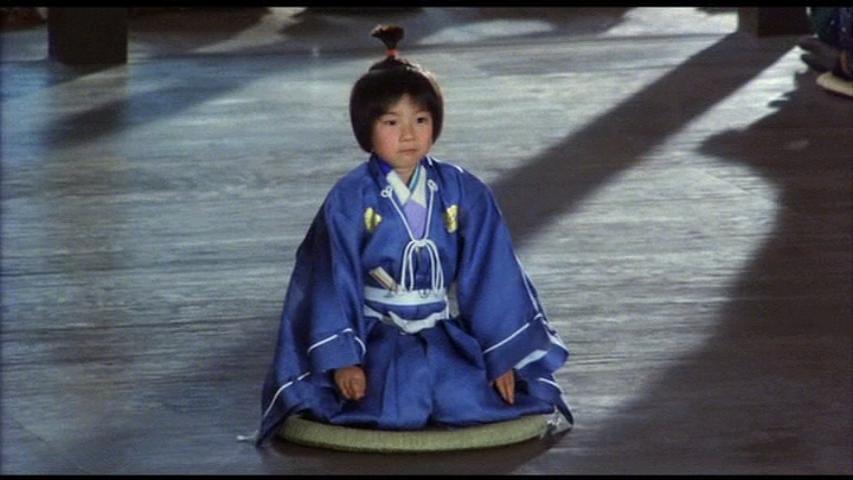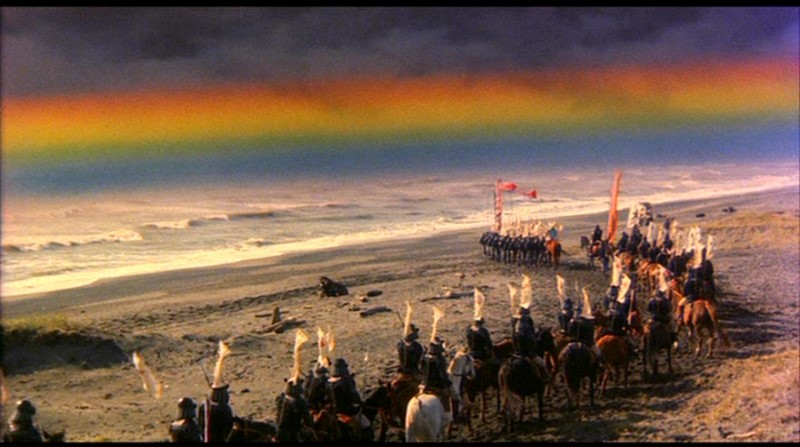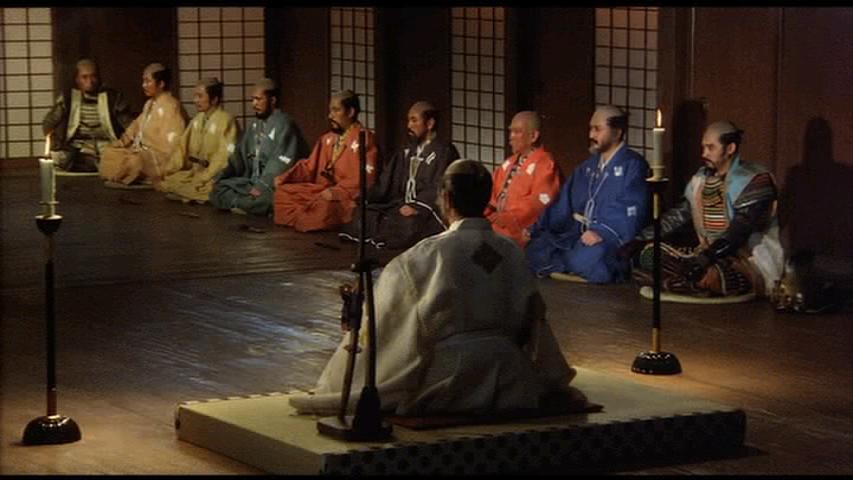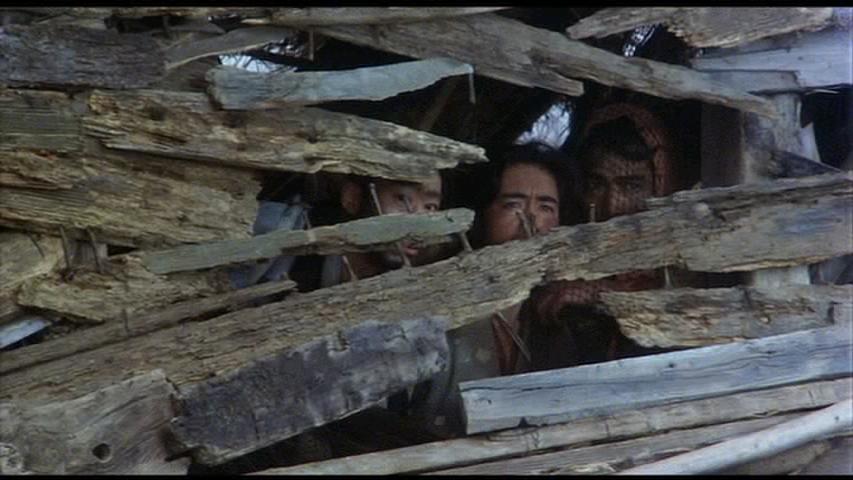|
Genres, Themes, Actors, and Directors:
- Japanese Films
- Kurosawa Films
- Military
- Mistaken or Hidden Identities
Response to Peary’s Review:
As Peary notes, this sumptuous epic film by master director Akira Kurosawa is long and “slow but not boring; however, it’s not all that engrossing because Kurosawa doesn’t really explore what’s going through the thief’s mind as he discovers he has noble qualities worthy of a great leader.” As Peary points out, “Kurosawa is more interested in pageantry, and his shots of mammoth armies… on the attack are astonishing”, making “marvelous” use of color. However, “Kurosawa is not interested in glorifying the battle”; indeed, a “major theme of the movie is that great leaders… defend their domains, while weak leaders… cross borders to wage war and annex territory.” While I’m not a fan of the film’s over-long battle scenes, there are some truly impressive shots of enormous armies — “with weapons, horses, [and] banners” — crowding the colorful landscape, and Kagemusha remains visually engaging throughout.
Redeeming Qualities and Moments:
- Nakadai’s masterful performances as both Shingen and the thief

- Kagemusha Shingen interacting with “his” playful grandson

- Stunning cinematography and colors

- Impressive, geometric scenes of wartime pageantry

- Colorful sets and costumes

- The comic relief provided by three bumbling spies, who are continually unsure whether Shingen is alive or dead

Must See?
Yes. While I don’t believe it’s one of his most compelling tales, Kagemusha still belongs squarely in the realm of “must see” films by Kurosawa.
Categories
- Foreign Gem
- Historically Relevant
- Important Director
Links:
|
One thought on “Kagemusha (The Shadow Warrior) (1980)”
Not must-see.
Technically speaking…first viewing. I saw this film on release (1980). While some of our great foreign/contemporary filmmakers were still actively producing work (esp. Kurosawa and Bergman), I made sure to go see anything they did, without question (as I recall). Of course, I didn’t end up liking everything I saw equally, but I went. However, when I saw ‘Kagemusha’…I fell asleep through (it seems) the middle-third. (Oddly, seeing it again now, I pretty much remembered around what point it was that I woke up again.) So…now I have seen the film through from beginning to end.
Of course, in between my first watch and now, I lived in Japan for 10 years…so I can look at the film from a more privileged perspective. Though I don’t think the film is all that hard to follow (for Western viewers), I somehow have the feeling that it is rare among Kurosawa’s films in that the scale tips in terms of it resonating more for Japanese audiences – who are likely to have more of an interest in the country’s history.
I don’t agree that the film would benefit from more of a focus on the thief’s ‘transformation’ to leader – mainly because he never really serves as a leader and is not called on to do so. He is there to be the film’s title – the Shadow Warrior – so, with minimal exception, he is more or less told what to do by those in ‘his’ clan who are acting with authority as they keep up appearances. Those who are in command actually do instruct ‘the double’ on the personality basics that he needs to perform his duties.
Also…I don’t think the film is “full of” battle scenes – in fact, for a film this length (2 hr., 38 min.), it’s surprising how little action we see. Even the climactic battle scene is for the most part jettisoned in order to focus (extensively) on the aftermath – it’s as if Kurosawa is purposely avoiding the ‘glorification’ of killing in order to show the horror of what is left in the wake of battle.
Tatsuya Nakadai, a very good actor, worked with Kurosawa several times – and here he firmly establishes the differences in his dual role, without being called on to deliver a standout performance.
Though I didn’t feel like dozing off this time around, I do think the film is a bit long and a bit on the dry side (esp. early on). Kurosawa was working with (it seems) thousands of extras – which he coordinated remarkably well – and some of the photography is extraordinary. There is even, occasionally, a bit of welcome humor. (I do esp. like the sequence in which ‘the double’ decides whether or not to fool his concubines – which is also one of the film’s few scenes that include women.)
I don’t think film fanatics should feel compelled to see all of Kurosawa’s work (though I think I have). This one is admirable for a number of reasons but it’s really only recommended for those who have a particular interest in seeing everything Kurosawa created.